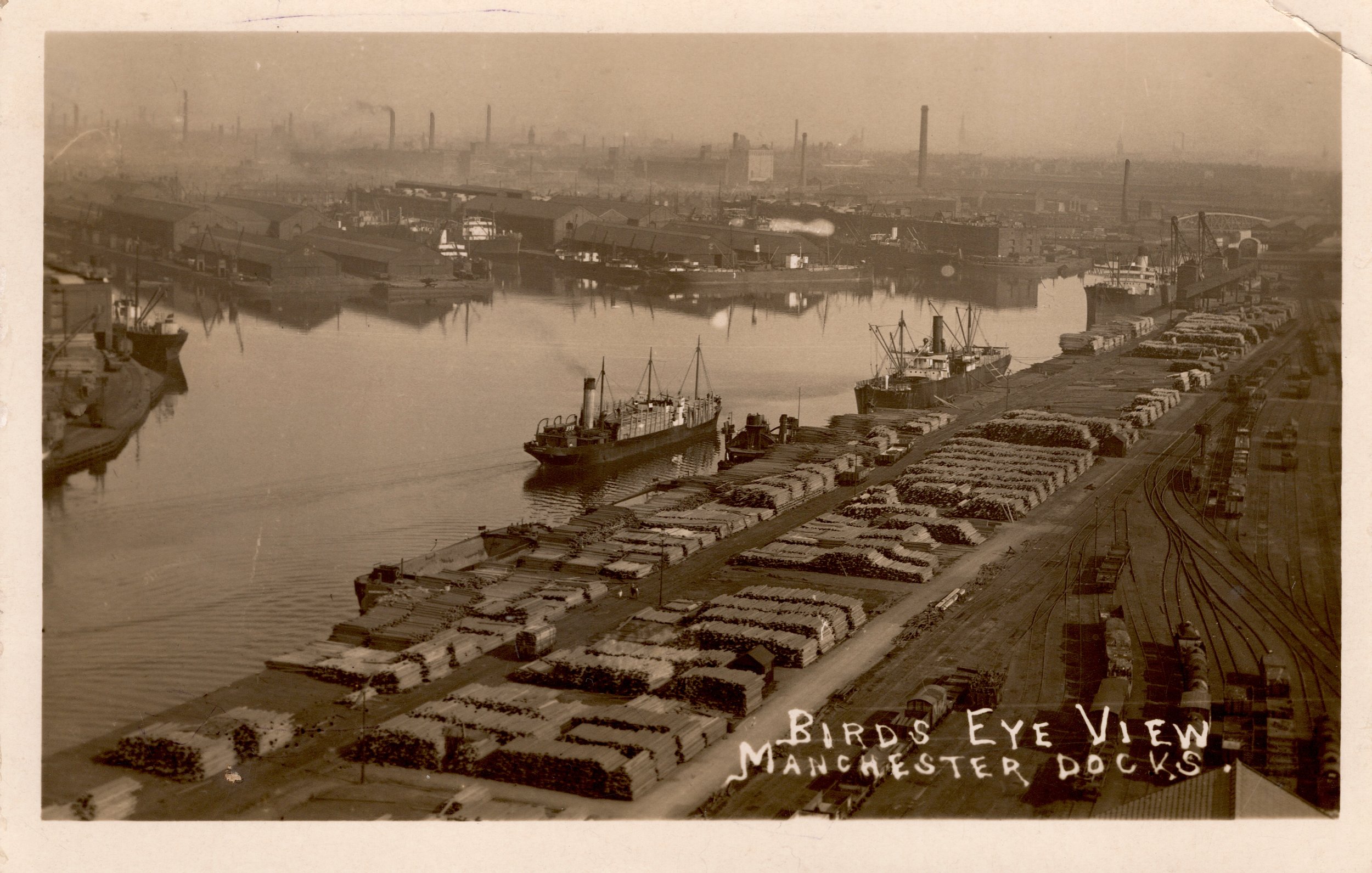3. Dockers
A Time of Trade and Toil
The dockworkers, or longshoremen, were the lifeblood of Salford Docks. It was tough, physical, dangerous work.

Illustration: Panorama of the Manchester Ship Canal - showing the scale of the engineering feat from the London Illustrated News in 1925, stretching from Salford Quays to the mouth of the River Mersey.
At its height, there were 5,000 dockers working at the Port of Manchester.
The dockers played a crucial role in the operation of the ports. They were responsible for loading and unloading cargo ships, as well as handling and storing freight on the docks. Heavy machinery, rope pulley systems and cranes were used to move cargo and containers with goods from across the world.
Photograph: The first cotton being unloaded at Salford Docks.
Dockworkers worked 12-hour shifts and had to fight to get work if there were more men than jobs.
Often from the local area, the dockers were employed on a casual basis for two days a week, but with no contract and no job security.
Ships weighing up to 12,500 tonnes delivered products from all over the world, especially America and Canada. Cargoes of cotton, grain, timber, tea, fruit, livestock and oil arrived at the Salford Docks. Exports included textiles, machinery, cars and locomotives.
Photograph: Workers on the Manchester Ship Canal.
A docker’s life
Photograph: Bustling activity of ships and cargoes at Salford Docks.
Former docker Bill Hardie shares his memories, taken from A Spark on Salford Docks, Bill Hardie, Manchester Ship Canal Memories 1954 - 1963.
“These were ships of around seven thousand tons but the amount of cargo they took aboard was incredible, and some of the items were surprising. Whilst watching the Gorjistan load, I noticed thousands of cartons of Kellogg’s cornflakes going aboard, then hundreds of porcelain toilets, followed by hundreds of cartons of Guinness.”
Life as a docker could be a dangerous business.
Not many of the timber carrying ships were unloaded without accidents and the Salford ambulance service was often required to attend the docks in response to injuries. The fire service were often called out too, as cargo caught on fire either out at sea or on the dockside.
“Working at the docks, we were all familiar with rats, but these in the Elevator were something else. They were huge and the place was overrun with them.” - Bill Hardie, former docker
The working conditions for dockers was harsh and often unpleasant. Bill Hardie describes the conditions for those working in the Grain Elevator at Dock No.9.
“Entering this building was like stepping into a twentieth century Hades, a dimly-lit cavern where every horizontal surface is covered in grain dust and the floor and walls thick with years of accumulated grime.
This constant swirl of dust irritates your eyes and within minutes your nose is clogged and your throat raw.”
Photograph: The thriving Salford Docks with vessels large and small shipping goods from across the world.
Often from the local area, the dockers were employed on a casual basis, employed for two days a week, with no job security.
The Casuals sculpture was made in 2010 with former Salford Dock workers and their families.
Each metal structure in the installation represents a dockworker's union card. They are arranged in separate groups emphasising the divide between those in and out of work. The Casuals sculpture, by artist Stephen Broadbent, was part of a much larger project called ‘Unlocking Salford Quays’, which formed part of The Lowry’s 10th Anniversary celebrations.
The casuals sculpture is located close to the Trafford end of the Millennium Footbridge across from The Lowry.
Photographs of the Casuals sculpture at Salford Quays by artist Stephen Broadbent in 2010 (credit broadbent.studio).










